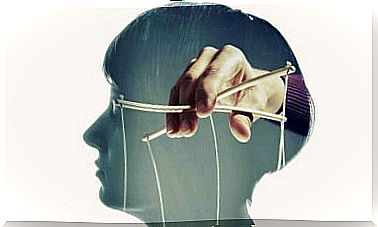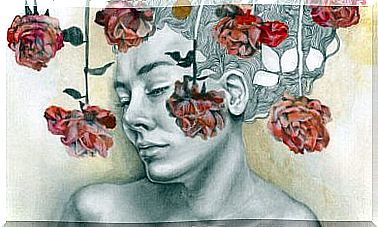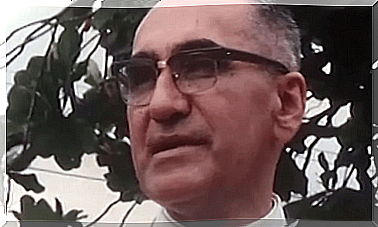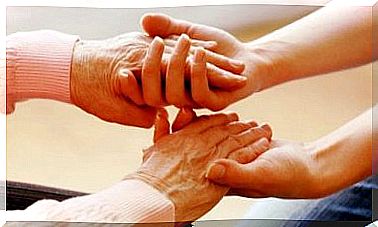Gerstmann Syndrome: Digital Agnosia
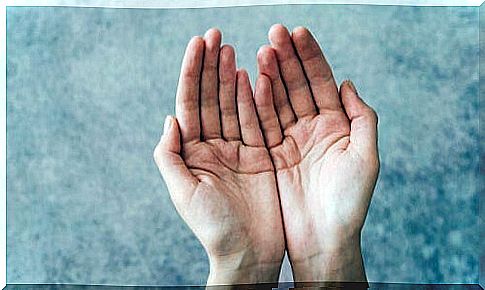
Gerstmann’s syndrome is a rare neurological disorder. It is known for its most important feature: the patient’s inability to recognize their fingers. But beyond this symptom, it is a much more complex and acquired disease (that is, the symptomatic picture arises following an injury).
The name comes from Josef Gerstmann, a young assistant in the Neurology department of the University of Vienna, Austria. This student analyzed a set of symptoms manifested by a woman who had had a stroke. From that moment on, the disease characterized by agraphy, digital agnosia and acalculia would bear his name.
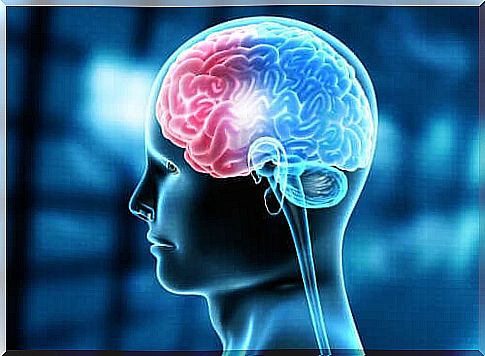
The underlying causes of Gerstmann’s syndrome
First of all, it must be said that most of the reported cases originate from a vascular problem. It seems to be the main cause of a syndrome characterized by the disappearance of the morphological knowledge of the hands and the inability to perform any action with them. The symptoms can be summarized as follows:
- Digital agnosia. Inability to recognize the fingers of one’s hand. The patient will act as if he cannot count on his fingers, as if he does not.
- Agraphy. In addition to manifesting the symptoms described above, the person loses the ability to express themselves through writing.
- Acalculia. People with Gerstmann syndrome also lose the ability to perform simple arithmetic operations.
- Sense of disorientation. Not knowing how to orient oneself in space, with confusion or inability to distinguish right from left.
The damage suffered
In 1930 Gerstmann concluded his description of the syndrome by studying the lesions of his own patients. Most of them were found to have damage to the dominant parietal lobe, and more specifically, to the angular gyrus.
In the parietal lobe is Penfield’s homunculus, a somatosensory mapping of the body. Within the parietal lobe there is an area centered on the fingers.
This area is much larger, in proportion, than the rest of the body, due to the importance and quantity of nerve endings in our hands.
The angular gyrus
This particularly damaged area in Gerstmann’s syndrome occupies a posterior portion of the parietal lobe. It is associated with the interpretation of language, with the assignment of a common code for visual and auditory information.
In general, patients with this syndrome have a stroke of the left median cerebral artery, which irrigates the angular gyrus.
Clinical features
We must clarify that Gestmann syndrome tends to present itself incompletely. This means that the three main symptoms do not necessarily have to express themselves in order to make a diagnosis.
Very often, there is no agraphia and semantic aphasia is common, a lack of understanding of logical-grammatical structures.
Gerstmann’s syndrome today
Since the syndrome was described some time ago, the progress of science has made its characteristics the subject of debate. Today we discuss the organic nature of the syndrome, proposing these areas of the parietal lobe as its etiology.
Many patients present with lesions of the left parietal lobe, the dominant hemisphere in most of the right-handed population. The anomalies occur at the cortical level, so in the areas intended for complex processing.
Diagnosis
The main disciplines involved in making a diagnosis of this syndrome are neurology and neuropsychology. Suspicions become concrete when the patient is asked to perform tasks that require recognition of his or her fingers.
From a neurological point of view, the diagnosis begins with exploratory examinations and is confirmed by tomographies and magnetic resonances that allow to observe the damaged tissue. At the same time, neuropsychology is concerned with analyzing and offering an assessment of impaired cognitive abilities through clinical observation.

Treatment of Gerstmann’s syndrome
The treatments are also divided and distinguished according to the specialist in charge . In principle, a combined approach is always required, from neurology to psychology.
- Neurological treatment. The approach is based on attention to organic damage through standard procedures. Then the treatment depends on the nature of the cause: vascular or brain tumor.
- Neuropsychological treatment. This approach is based on the treatment of the cognitive functions affected by the lesion. Given the variability of symptoms, treatment must be personalized and multidisciplinary.
- Psychoeducation. Being informed and aware of the syndrome is very important to take action on the underlying emotional aspects.
Finally, both treatments must aim at the functional recovery of the patient. With lenses that aim for optimal functioning, pushing the isolation away.
Although Gerstmann’s syndrome is rare in the global population, at first it attracted the attention of researchers and specialists for its characteristics.
The interest lies in the fact that the correct functioning of the brain depends on an equally correct vascular functioning. Consequently, all activities that put the circulatory system at risk also represent a danger to the nervous system.


